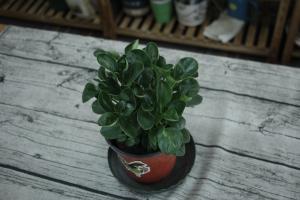Introduction
Indoor plants are a great addition to any home or office. They add color and life to any space and research has shown that they can improve our mental and physical health. However, one of the most important aspects of keeping indoor plants healthy is making sure that they are watered correctly. In this article, we will discuss how often indoor plants should be watered to ensure that they thrive.
Factors to Consider
The frequency of watering indoor plants depends on a number of factors such as the type of plant, the type of soil, the size of the pot, the amount of light the plant receives, and the humidity in the environment. Some plants require more frequent watering than others, and some soil types retain water better than others. The larger the pot, the more water it can hold, and the more light a plant receives, the more water it will require. Similarly, in dry environments, plants will need to be watered more often than in humid ones.
General Guidelines
As a general rule, indoor plants should be watered when the top inch of soil feels dry to the touch. However, this is not a one-size-fits-all guideline and you should always check the specific requirements of your plant. You can do this by reading up on the type of plant you have or by checking with a local plant nursery or professional gardener. Over-watering your plant can be just as harmful as under-watering it, so it is important to get it right.
Specific Plants and Their Watering Needs
Some plants require more frequent watering than others. For example, succulents and cacti are desert plants that are able to store water in their leaves and do not require frequent watering. On the other hand, ferns and other tropical plants require more humidity and therefore need more frequent watering. In general, most indoor plants should be watered once a week. However, this can vary depending on the plant, so it is important to do your research and adjust watering frequency accordingly.
Tips for Watering Indoor Plants
To ensure that your indoor plants thrive, follow these tips:
Water your plants in the morning when the soil is cool and before the plant starts to photosynthesize.
Use room-temperature water rather than cold water.
Avoid over-watering by allowing the plant to drain excess water before replacing it in its drip tray.
If your plant is in direct sunlight, you may need to water it more frequently.
If your plant is near a heat source, such as a radiator or fireplace, you may need to water it more frequently.
Conclusion
Watering indoor plants can be a tricky business, but with some careful observation and research, you can ensure that your plants remain healthy and vibrant. Remember to always check the requirements of your specific plant and adjust watering frequency accordingly. With a little bit of effort, you can enjoy the beauty and benefits of indoor plants for years to come.

 how many times do yo...
how many times do yo... how many planted tre...
how many planted tre... how many pine trees ...
how many pine trees ... how many pecan trees...
how many pecan trees... how many plants comp...
how many plants comp... how many plants can ...
how many plants can ... how many plants and ...
how many plants and ... how many pepper plan...
how many pepper plan...





























